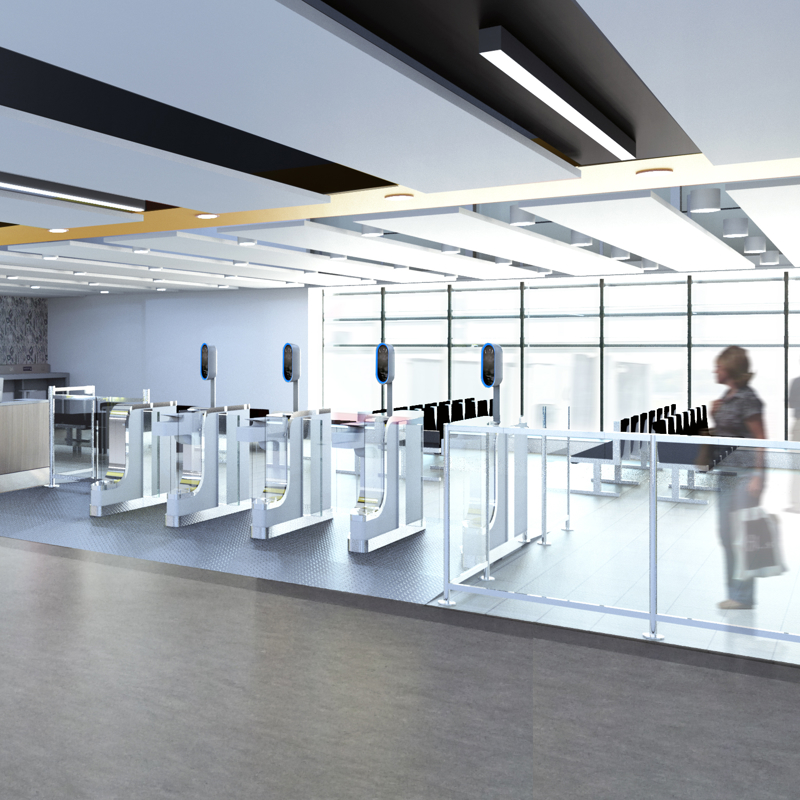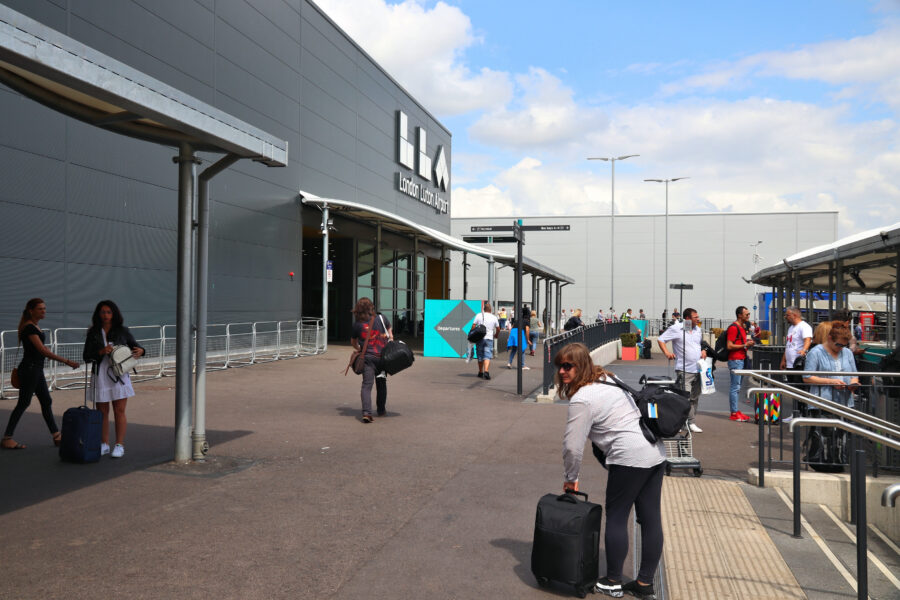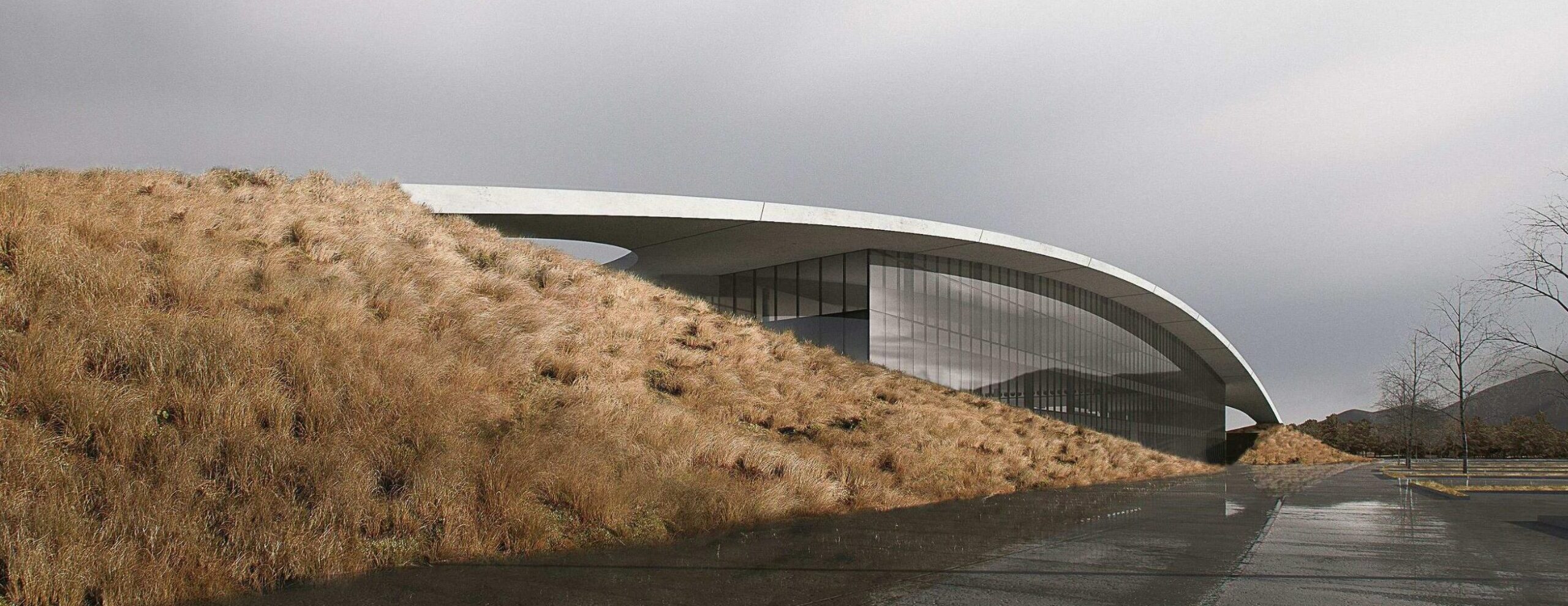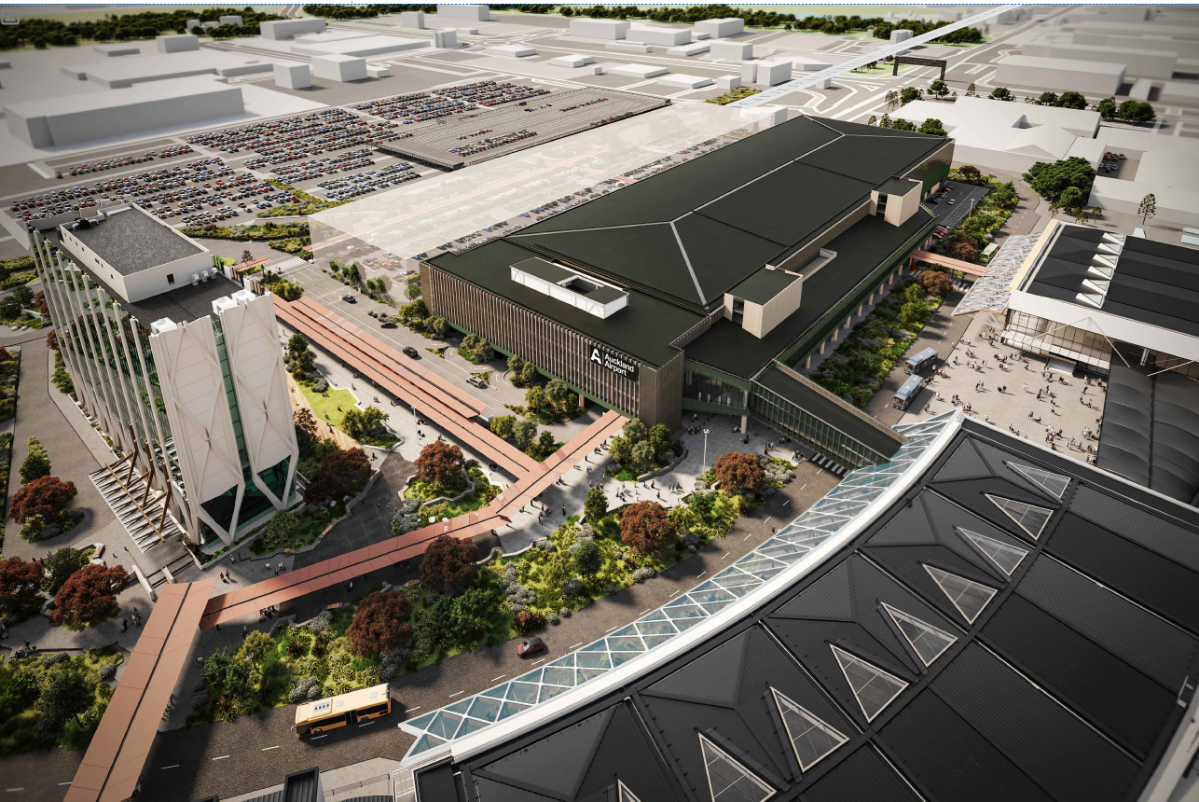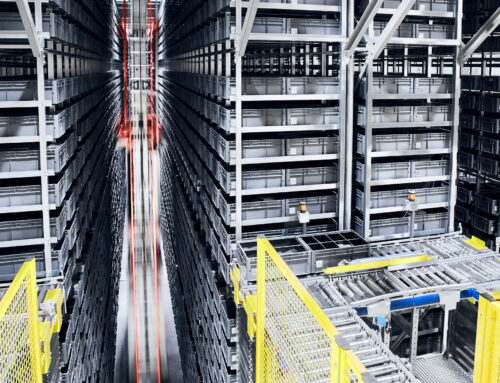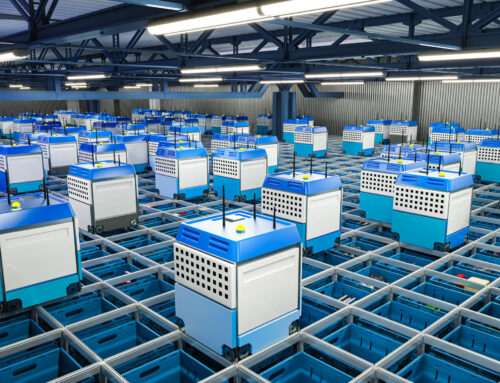Decarbonisation, advancing technology and ever-increasing passenger expectations are propelling the aviation industry into an unfamiliar future. Airports and operators are responding with strategies to achieve net zero, build resilience, enable expansion and stand out from the competition.
In this article, our aviation directors from across Tetra Tech come together share their insights on what airports and operators should be doing to remain competitive over the next 5 years.
Sustainability and decarbonisation
Reducing carbon emissions is a key focus for airports and operators and the industry is moving faster than it ever has. Initiatives include:
- developing decarbonisation strategies that encompass airside, landside and transport to and from the site
- implementing carbon lifecycle assessments (LCAs) to evaluate the total carbon impact of materials and operations throughout their entire lifecycle
- embracing ratings schemes, for example Airport Carbon Accreditation, LEED and Green Star
- collaborating with other airports and partners to leverage learnings and accelerate the journey.
Passengers are starting to become more aware of their travel’s impact on global emissions. They’re demanding transparency and beginning to choose transport hubs based on sustainable credentials.
The International Air Transport Association’s (IATA) Fly Net Zero strategy brings air transport in line with the Paris Agreement’s goal of achieving net zero by 2050. To succeed, they will require the coordinated efforts of the entire industry – airlines, airports, air navigation service providers, manufacturers – and significant government support.
Transitioning to renewable energy
As airports move away from fossil fuels, we’re seeing solar and electric being implemented as a practical alternative and hydrogen being explored. This encompasses more than just building services; we’re also involved in the development of services for the electrification of ground support vehicle and hire car companies.
The UK’s Jet Zero Strategy, which aims for net-zero domestic flights by 2040 and 10 per cent of jet fuel to come from sustainable aviation fuel (SAF) by 2030, is just one example of how government policies are shaping these efforts. The Australian Jet Zero Council and the US Aviation Climate Action Plan also have national plans with sector-wide commitments.
Upgrading infrastructure and improving performance
Infrastructure audits have become a first step to identify opportunities for efficiency across the building fabric and building services.
While transitioning infrastructure and plant over to renewables incurs significant capital expenditure, it also offers immediate energy savings with more efficient equipment. Examples include heat pumps and preconditioned air which enable real savings in energy, cost and carbon.
Electric vehicle chargers are also a critical part of any infrastructure upgrade with a comprehensive fire strategy review essential. Installation of local and national hydrogen pipelines – such as Hynet in the United Kingdom – enables the use of hydrogen for heat boilers in district networks in the future.
Waste reduction strategies are also being rolled out across all aspects of operations.
Sustainable materials
Reusing materials in construction, or sourcing materials with significantly reduced embodied carbon, is an important part of any airport’s decarbonisation strategy.
Pavements and runways
Reviewing the design and materials in pavement construction and using low-temperature asphalt can significantly cut carbon emissions.
Reduce, reuse and recycle initiatives include:
- using specialist software that incorporates analytical and finite element analysis. This enables airports to reduce the thickness of asphalt material overlaying a concrete pavement
- reusing site-won material or by-products from other industries
- recycling existing materials into new pavement layers, for example crushing existing concrete pavements and using the material in new pavement construction.
Design innovations include:
- low temperature asphalt which incorporates reducing the temperature for mixing the material, saving energy and time
- incorporating polymer-modified bitumen and geosynthetic reinforcement in asphalt to resist reflection cracking, improving durability and lifespan
- Adding graphene in concrete to increase strength and durability.
At Dublin Airport, reports show that a 230 tonnes reduction in CO2 was achieved by incorporating geosynthetic grid reinforcement and specialist design software to mitigate reflective cracking during a runway rehabilitation project.
At Schiphol Airport, 1,030 tonnes of CO2 was saved during a runway rehabilitation project by using polymer-modified bitumen and recycled asphalt.
Design for Manufacture and Assembly (DfMA)
DfMA allows for a completely different method of construction. The process focuses on enabling faster, cheaper and safer construction by:
- ensuring all designs can be manufactured easily and cost-effectively
- considering how the manufactured parts can be efficiently assembled away from the construction site.
One of the big DfMA success stories is the manufacture and installation of the mega risers at Manchester Airport in the United Kingdom. The team at Hoare Lea, part of the Tetra Tech High Performance Buildings Group, and Laing O’Rourke were able to save weeks on the build programme, introduce controlled quality to the installation and make the construction site safer by reducing the number of operatives working in tight confined spaces.
Manchester Airport’s mega risers.
The Manchester Airport Transformation Programme creates a world class operation that can handle millions more passengers every year.
Sustainable aviation fuel
There’s huge potential for airports to accelerate their decarbonisation efforts with the electrification of ground support vehicles, adoption of sustainable aviation fuels (SAFs) and production of fuel on-site.
SAFs offer a number of benefits over traditional fuels including contributing to energy security with a diversified fuel supply and reducing reliance on fossil fuels. Technological innovations are enabling these fuels to become more efficient and cost-effective while government policies and incentives will drive adoption.
The EUROCONTROL Aviation Outlook offers insights into how the aviation sector will achieve net-zero CO2 emissions by 2050. SAFs are a crucial part of this.
Electricity
While we’re still at the advent of this technology, there are many exciting developments underway, including:
- small transit aircraft, for example electric helicopters and smaller regional planes
- cargo transportation through electric drones.
Hydrogen
Research into hydrogen as a potential energy source for aircraft has been intensifying. Considered one of most promising zero-emission technologies, liquid hydrogen is looking more favourable than compressed gases.
Other fuels
Biofuel research and cargo transportation through helium blimps are also in research stage. Some of these fuels have the potential to support rural development and agricultural diversification.
Technology
Technology is behind every piece of progress in the aviation industry – from enhancing security to improving operational efficiency and lifting the passenger experience.
It’s critical that we plan for flexible technology that’s effective today and able to incorporate future technologies without impacting the building fabric.
Technology for operational efficiency
Digital models
Airports are increasingly relying on detailed digital models of their assets. These models provide a comprehensive view of the existing infrastructure allowing for more efficient planning and execution of upgrades.
The models allow airports to simulate scenarios, optimise operations and reduce costs. The approach also supports long-term maintenance strategies by ensuring assets are managed effectively throughout their lifecycle.
Drones and autonomous aircraft
The rise of drone technology and autonomous aircraft are exciting developments in aviation. Drones are being used for a variety of purposes:
- Airport inspection and maintenance: traditionally, inspection of precision approach path indicator (PAPI) has been done by flight inspection aircraft. Drones can be equipped to check these units are performing correctly.
- Contactless cargo delivery: trials are being carried out to deliver medical supplies to remote locations. The cargo industry is set to grow.
- Bird control: bird strikes threaten bird and aircraft safety. A drone can be used to scare birds on the ground and lure flocks away from airspace.
- Autonomous aircraft: these are likely to become one of the most transformative trends in aviation. While we may not, yet, be boarding pilotless planes, advancements are laying the groundwork for fully autonomous aircraft becoming a reality in the future.
- Electric vertical take-off and landing (eVTOL): eVTOL are becoming increasingly popular as the aviation industry seeks to provide efficient, point-to-point transportation between urban areas.
Wi-Fi personal networks (WPN)
These are dedicated networks that operate over a shared physical network but provides users with a secure and private connection. By segmenting the network into individualised, isolated virtual networks, a WPN ensures that each user’s data and devices remain confidential and protected from other users on the same shared infrastructure. This approach mitigates the privacy and security issues commonly associated with shared networks.
Further benefits include:
- operational efficiency through reliable, real-time communication between various airport stakeholders
- baggage handling systems that can enhance the accuracy and speed of baggage handling processes
- surveillance and monitoring, supporting high-resolution video surveillance systems and enabling real-time monitoring of airport premises
- Data-driven decision making with the deployment of autonomous vehicles and drones within airport premises.
Artificial intelligence
Airports are leveraging AI and advanced analytics to optimise gate assignments, flight paths and overall efficiency. These technologies enable better management of air traffic, particularly during peak times, and contribute to a smoother experience for airlines.
Alaskan Airlines used the slow-down of the pandemic to test out some new flight-path programming for their aircraft. During a six-month trial period, it implemented an AI-driven program to discover optimal flight paths by factoring in the original route, weather conditions, weight of aircraft and other factors.
The AI program tested all possible routes and collected data on mileage and fuel use. It then used that data to refocus its subsequent efforts, all with the goal of creating the most efficient flight route in real time.
During the 6-month pilot, the airline shaved an average 5 minutes from flights, amounting to 480 thousand gallons of jet fuel saved.
Remote air traffic control towers
The concept of remote air traffic control towers is gaining traction, especially at smaller airports. These towers allow air traffic controllers to manage multiple locations from a central hub, reducing the need for on-site staff and infrastructure.
The technology is still in early stages but expected to become more prevalent as airports look for ways to improve efficiency and reduce costs.
Smart systems
There’s no end to the benefits smart buildings technology can offer airports. Some of the latest developments in this area include:
- automating debris detection – to manage waste more efficiently and improve cleanliness
- asset tracking of mobile equipment like wheelchairs – to enable faster delivery and more efficient use of resources
- integration of arrivals and departures with ground transport – to speed up the arrivals and departures process.
Delta Sky Way LAX Terminals 2 & 3 Modernisation.
The project at Los Angeles International Airport includes demolition and reconstruction of a portion of the T2 & T3 Headhouse and the new T3 Concourse for Phase 1.
Technology that enables a frictionless passenger experience
Airports are mixed-use developments that need to accommodate transport, retail, hospitality, entertainment, health and wellbeing.
The distance from kerb to gate is usually long which provides an opportunity for engagement through interactive wayfinding, dynamic retail and advertising. This journey also needs to offer surety on available dwell time.
Designing terminals or transport hubs to be centred around flow, comfort, convenience, accessibility and amenities significantly enhances the passenger experience.
Using smart technology to enable clear signage and intuitive navigation is key. Comfortable seating, adequate facilities (restrooms, lounges, charging stations) and a wide range of food and retail options are also expected.
Biometrics
Advanced technologies, for example biometrics, are being used to streamline check-ins, security checks, boarding processes and wait times. This can significantly reduce kerb-to-plane time.
Identification and authentication through facial recognition, fingerprints and retina scanning can streamline the lengthy security process. This integration of biometric technology into customs and border control, with automated eGates as one example, is improving security speed and quality as well as easing passenger stress.
The adoption of biometric technology in airports is expected to grow rapidly, especially for self-bag drop systems.
Artificial intelligence
Artificial intelligence (AI) and advanced analytics are also helping to optimise gate assignments and flight paths and reduce delays. These technologies enable better management of air traffic, particularly during peak times, which contributes to a smoother experience for passengers.
Some of the initiatives we’re seeing include:
- automated check-in which can sense the departure areas that are busy and move check-in to those areas to alleviate queues and delays
- concierge robots which meet and greet passengers
- AI-driven pattern recognition to enhance biometric technology.
Security search, advanced screening and automated border control
Security search technology and advanced screening methods have the potential to eliminate the need for passengers to remove items like liquids and electronics from their bags, creating an easier passenger and staff experience.
Hoare Lea is currently designing and installing integrated automated border control technology, or eGates, at border control check points for passport control.
Wi-Fi personal networks (WPN)
This remains one of the hottest opportunities for air transport providing a compelling opportunity to enhance various aspects of the passenger experience. These networks, often based on LTE or 5G technology, provide airports with a dedicated, secure and high-performance communication infrastructure.
Benefits to the passenger include:
- fast and reliable Wi-Fi and secure internet connectivity
- personalised services through mobile apps
- faster check-In and boarding by enabling technologies like biometric scanning, mobile check-ins and automated boarding gates, WPNs can streamline the check-in and boarding processes, reducing wait times.
Travel to and from the airport
Both emerging start-ups and established manufacturers are developing eVTOL (electric vertical take-off and landing) vehicles. They’re fuelled by electric power and are considered a quiet and low-emission means of transport.
Challenges being worked through include:
- establishing an operational and mechanical safety record
- constructing infrastructure including vertiports, take-off and landing zones, charging stations
- integrating eVTOL air traffic management with other systems.
- achieving popular support for unmanned aerial flight.
Luton DART
The Luton DART speeds passengers from Luton Airport to the mainline in under four minutes. It consists of two new stations at each end of a 2.1km rail link, as part of the £225m Direct Air-Rail Transit (DART).
Challenges and opportunities
The future of aviation offers incredible opportunities for innovation and growth.
Decarbonisation and sustainability
Achieving net-zero emissions by 2050 is a significant challenge for the industry. However, it also presents an opportunity for airports and operators to step up as leaders in sustainable innovation. By investing in renewable energy, sustainable materials and carbon offsetting programs, the industry can reduce its environmental impact while meeting the growing demand for air travel.
Nurturing biodiversity is also an ongoing challenge.
Managing growth and expansion
As air travel continues to grow, airports face the challenge of expanding their facilities while maintaining operational efficiency in a 24/7 live environment.
This includes building in flexibility for terminal and runway expansion early, managing construction projects, securing planning permissions and ensuring that expansions don’t negatively impact the passenger experience or communities on flight paths.
Competition
Passengers are embracing different means of travel to and from the airport including train or bus, rideshare services, carparking and valet services, taxi or personal drop off and pickup. We need to continue to integrate these into the planning process for airports if they’re to remain attractive for both flyers and non-flyers.
Staffing is forecast to be an issue in aviation and the industry’s responding with an increase in amenity for airside workers.
Power
As a high-energy sector, airports and operators need to plan for power scarcity as they move to electrify their assets. Getting clear ahead of time on capacity needed – at least 5 years into the future – will help to secure the energy they need as the grid experiences a surge in demand due to electrification.
Adapting to changing passenger expectations
Passenger expectations are constantly expanding, driven by technological advancements and changing social norms. Airports must stay ahead of these trends to remain competitive by offering enhanced services, such as personalised experiences, and seamless travel.
This requires flexible and evolving masterplans alongside continuous investment in technology and infrastructure. It demands partnerships, technical expertise and innovation.
Sea-Tac, Washington, United States
The integration of advanced security and technology protocols enable an airport to become a destination for flyers and non-flyers like meet and greet, family members and transport support.



